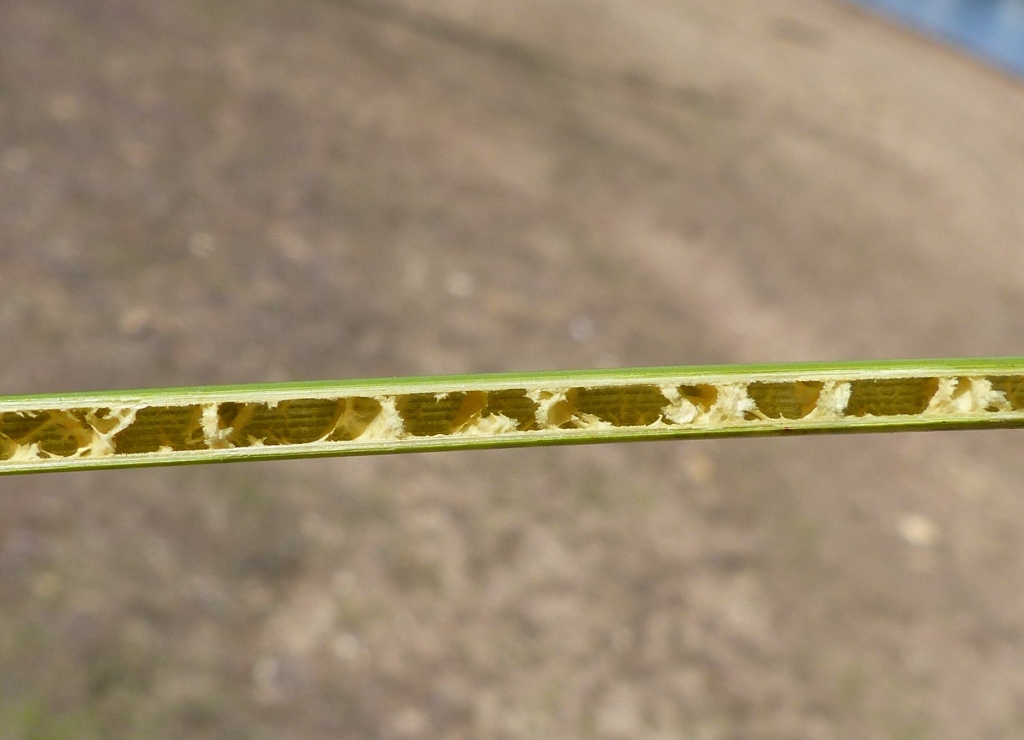Juncus gregiflorus
L.A.S.JohnsonDensely tufted perennial with horizontal or ascending rhizomes. Cataphylls brown to reddish-brown towards the base, to c. 28 cm long. Culms erect, bright shiny green, 40–170 cm high and 1.0–3.0 mm diam.; striations 30–70, moderately strongly raised; pith interrupted, usually with large air spaces; stomates superficial. Inflorescence with flowers clustered (very rarely some scattered), the clusters ± separated by bare branches; primary bract continuous with culm, to c. 30 cm long; prophylls present. Tepals stramineous, 1.6–2.4(–2.7) mm long; stamens 3, anthers c. 0.4–0.7 mm long. Capsules with a flattened reddish-brown or occasionally stramineous apex, shorter than, equal to or exceeding the tepals, 1.5–2.4 mm long. Flowers mostly Nov.-Jan., seeds shed mostly Dec.-Mar.
Wim, VVP, VRiv, MuF, GipP, OtP, WaP, Gold, CVU, GGr, NIS, EGL, EGU, HSF, HNF, OtR, Strz, MonT, HFE, VAlp. Also WA, NSW, ACT, Tas. New Zealand. Common in eastern Victoria, less common west of Melbourne. Occurs primarily in riparian vegetation, but also common in moist modified sites such as dam margins, roadside drains and pastures.
A distinctive species in the field with its bright green culms (typically with large air spaces), dark cataphylls, clustered flowers, short acute (rather than acuminate) tepals (very rarely exceeding 2.4 mm long) and flat-topped capsules. Juncus gregiflorus could be confused with J. australis, J. amabilis, J. procerus, J. alexandri and J. bassianus. See notes under these species for differences. Hybrids with J. amabilis, J. procerus and J. sarophorus are known.
Albrecht, D.E. (1994). Juncus. In: Walsh, N.G.; Entwisle, T.J., Flora of Victoria Vol. 2, Ferns and Allied Plants, Conifers and Monocotyledons, pp. 197–233. Inkata Press, Melbourne.
 Spinning
Spinning

